Related Research Articles

The Church of the Holy Sepulchre, also known as the Church of the Resurrection, Arabic: كنيسة القيامة, romanized: Kanīsat al-Qiyāma. is a fourth-century church in the Christian Quarter of the Old City of Jerusalem. It is considered to be the holiest site for Christians in the world, as it has been the most important pilgrimage site for Christianity since the fourth century.

Filioque, a Latin term meaning "and from the Son," was added to the original Niceno-Constantinopolitan Creed, and has been the subject of great controversy between Eastern and Western Christianity. The term refers to the Son, Jesus Christ, with the Father, as the one shared origin of the Holy Spirit. It is not in the original text of the Creed, attributed to the First Council of Constantinople (381), which says that the Holy Spirit proceeds "from the Father", without additions of any kind, such as "and the Son" or "alone".
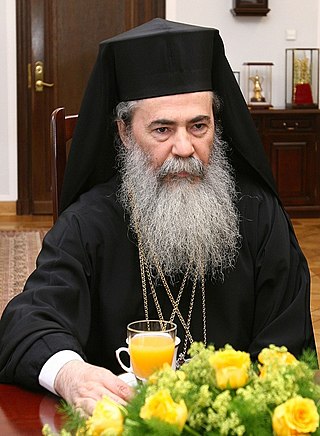
The Greek Orthodox patriarch of Jerusalem or Eastern Orthodox patriarch of Jerusalem, officially patriarch of Jerusalem, is the head bishop of the Greek Orthodox Patriarchate of Jerusalem, ranking fourth of nine patriarchs in the Eastern Orthodox Church. Since 2005, the Eastern Orthodox patriarch of Jerusalem has been Theophilos III. The patriarch is styled "Patriarch of the Holy City of Jerusalem and all Holy Land, Syria, beyond the Jordan River, Cana of Galilee, and Holy Zion." The patriarch is the head of the Brotherhood of the Holy Sepulchre, and the religious leader of about 130,000 Eastern Orthodox Christians in the Holy Land, most of them Palestinians.
The East–West Schism, also known as the Great Schism or Schism of 1054, is the ongoing break of communion between the Roman Catholic and Eastern Orthodox churches since 1054. It is estimated that, immediately following the beginning of the schism, a slim majority of Christians worldwide were Eastern Christians; most of the rest were Western Christians. A series of ecclesiastical differences and theological disputes between the Greek East and Latin West preceded the formal split that occurred in 1054. Prominent among these were the procession of the Holy Spirit (Filioque), whether leavened or unleavened bread should be used in the Eucharist, the Pope's claim to universal jurisdiction, and the place of the See of Constantinople in relation to the pentarchy.

The Greek Orthodox Patriarchate of Jerusalem, also known as the Greek Orthodox Church of Jerusalem, is an autocephalous church within the wider communion of Eastern Orthodox Christianity. Established in the mid-fifth century as one of the oldest patriarchates in Christendom, it is headquartered in the Church of the Holy Sepulchre in Jerusalem and led by the patriarch of Jerusalem, currently Theophilos III. The patriarchate's ecclesiastical jurisdiction includes roughly 200,000 to 500,000 Orthodox Christians across the Holy Land in Palestine, Jordan and Israel.
The Encyclical of the Eastern Patriarchs is a letter issued in May 1848 by the four Eastern patriarchs of the Eastern Orthodox Church, who met at Council in Constantinople. It was addressed to all Eastern Orthodox Christians, as a response against Pope Pius IX's Epistle to the Easterners which had been issued in January (1848).
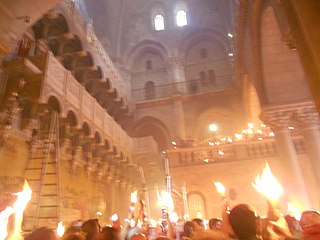
In Orthodox Christian belief, the Holy Fire is a ceremony that occurs every year at the Church of the Holy Sepulchre in Jerusalem on Great Saturday, the day before Orthodox Easter.

Theodosios (Hanna) of Sebastia is the Archbishop of Sebastia from the Greek Orthodox Patriarchate of Jerusalem. Colloquially known as Atallah Hanna, Atallah and Theodosios both meaning "gift of God" in Arabic and Greek, respectively. Theodosios, who was ordained on the 24 December 2005 at the Church of the Holy Sepulchre, is the second Palestinian to hold the position of archbishop in the history of the diocese.

The Fourth Council of Constantinople was the eighth ecumenical council of the Catholic Church held in Constantinople from October 5, 869, to February 28, 870. It was poorly attended, the first session by only 12 bishops and the number of bishops later never exceeded 103. In contrast the pro-Photian council of 879–80 was attended by 383 bishops. The Council met in ten sessions from October 869 to February 870 and issued 27 canons.
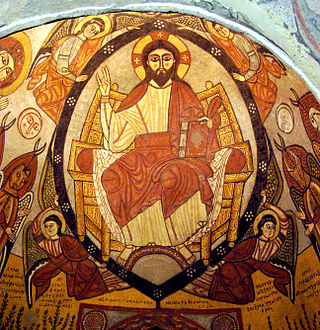
Oriental Orthodoxy is the communion of Eastern Christian Churches that recognize only three ecumenical councils—the First Council of Nicaea, the First Council of Constantinople and the Council of Ephesus. They reject the dogmatic definitions of the Council of Chalcedon. Hence, these Churches are also called Old Oriental Churches or Non-Chalcedonian Churches.

In the 9th century, Christianity was spreading throughout Europe, being promoted especially in the Carolingian Empire, its eastern neighbours, Scandinavia, and northern Spain. In 800, Charlemagne was crowned as Holy Roman Emperor, which continued the Photian schism.
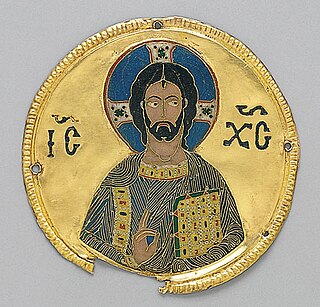
Christianity in the 11th century is marked primarily by the Great Schism of the Church, which formally divided the State church of the Roman Empire into Eastern (Greek) and Western (Latin) branches.
John VII was Patriarch of Jerusalem from 964 to 966. He was among the bishops of Jerusalem who suffered a martyr's death at the hands of Muslim mobs. He was elected patriarch after the death of his predecessor Agathon in 964.

Christianity in the Middle Ages covers the history of Christianity from the fall of the Western Roman Empire. The end of the period is variously defined. Depending on the context, events such as the conquest of Constantinople by the Ottoman Empire in 1453, Christopher Columbus's first voyage to the Americas in 1492, or the Protestant Reformation in 1517 are sometimes used.

Patriarch Benedict of Jerusalem, also Benediktos I of Jerusalem, born Vasileios Papadopoulos was the Patriarch of Jerusalem of the Greek Orthodox Church of Jerusalem from 1957 to 1980.
The history of the filioque controversy is the historical development of theological controversies within Christianity regarding three distinctive issues: the orthodoxy of the doctrine of procession of the Holy Spirit as represented by the Filioque clause, the nature of anathemas mutually imposed by conflicted sides during the Filioque controversy, and the liceity (legitimacy) of the insertion of the Filioque phrase into the Nicene Creed. Although the debates over the orthodoxy of the doctrine of procession and the nature of related anathemas preceded the question of the admissibility of the phrase as inserted into the Creed, all of those issues became linked when the insertion received the approval of the Pope in the eleventh century.
George of Jerusalem was the Patriarch of Jerusalem from 797 until his death. Little is known about his activities while he was patriarch. At the time, the Church of Jerusalem was under the Abbasid Caliphate.
Christodulus I of Jerusalem, also Christopher, was Melkite Patriarch of Jerusalem of the Church of Jerusalem from 937 to 951. Early in his patriarchate he was confronted with Muslim rioting and church destruction.
Christodulus II of Jerusalem was the Melkite patriarch of Church of Jerusalem from 966 to 969.
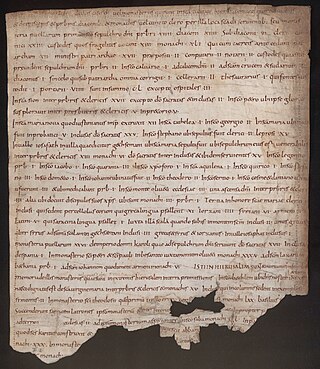
The Basel roll is a manuscript containing three administrative documents in Latin from the Carolingian Empire. The documents were composed for Charlemagne during his reign as emperor (801–814) and the manuscript that survives was copied somewhat later in the ninth century. The purpose of the documents was to assess the financial needs of the patriarchate of Jerusalem in preparation for the sending of funds for its personnel and the repair of its buildings.
References
- This article incorporates text from Thomas I of Jerusalem at OrthodoxWiki which is licensed under the CC-BY-SA and GFDL.